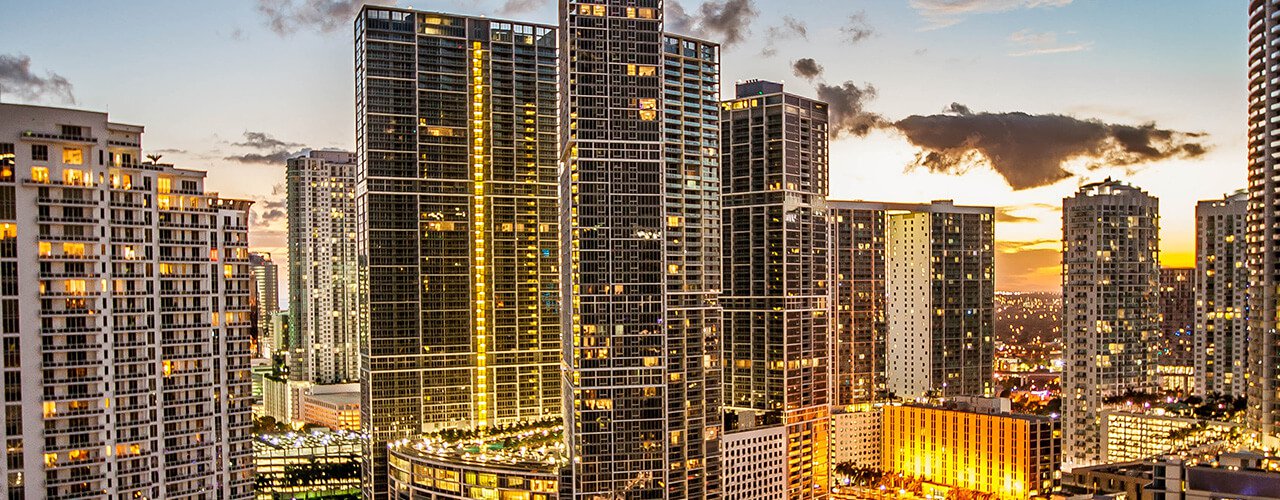Commercial real estate, and offices specifically, will likely undergo major shifts as a result of COVID-19— at least in the short-term — to ensure that employees can return to work safely.

Francisco Acoba, managing director of Deloitte Consulting
We had the pleasure of interviewing Francisco Acoba, managing director of Deloitte Consulting. He offered us in-depth insights regarding several subjects, including recovery from the impact of coronavirus, automation, and more.
Q: Could you start by telling us a little bit about your background and why you chose a career in commercial real estate?
I am a managing director at Deloitte Consulting LLP and leader of the Real Estate & Location Strategy practice. I have more than 22 years of global experience providing management consulting services to corporate services, corporate real estate, workplace, and facilities management organizations within Fortune 500 companies and the world’s largest public sector entities.
I specialize in the development of strategies that allow a company’s corporate services resources, real estate, and facilities to be considered value-added components of business processes.
My father was an architect with a number of the large, global firms in NYC, so I grew up as part of the real estate, architecture, and building industries. This exposure framed my perspective and drove my love for commercial and corporate real estate.
Q: Considering the COVID-19 outbreak, what are your thoughts on the CRE market in the US today in terms of trends and challenges?
This pandemic is a pivotal point in time. As organizations take steps to keep their employees safe and operations running, a new workplace normal is beginning to emerge. Corporate real estate teams will need to plan for and manage a new workplace and workplace experience, in which people are moving, working, and interacting differently.
To begin planning a recovery response, we have identified five areas that corporate real estate leaders should be thinking about today.
- Re-entry planning: including who will go to the office and when
- Safety, resilience, and operations: regarding the cleanliness of facilities and the health of employees
- Workspaces and materials: as it relates to office design and layout, from furniture configurations and finishes to the usage of space
- Employee experience: remembering that employees value how employers treat them—no matter where they’re working from
- Digital workplace and smart building: including emerging technologies that can help prevent the spread of illness, monitor wellness, and make employees more productive
At this point in time, the commercial real estate markets are focused on working with tenants and investors to understand the demand and supply impacts of COVID-19. Over the next twelve months, as corporations refine their long-term real estate and facility requirements, they will begin to restructure their real estate portfolios. The extent to which these changes positively or negatively impact commercial real estate markets is to be determined.
Q: How have you seen the industry evolve in the past years you’ve been involved in it? Where do you see it going in the future?
The Fourth Industrial Revolution is increasingly top of mind for leaders across industries. Robotic process automation (RPA), for example, is changing how businesses are run. It will soon do the same for corporate real estate (CRE) and facilities management (FM) organizations.
- Thanks in part to other enabling functions, which are already leveraging RPA to impact both cost and quality across large scale deployments, CRE and FM organizations can become “fast followers” in the RPA movement.
- RPA has the potential to create a significant shift in an organization’s cost structure while improving responsiveness to internal client demands.
- As part of a broader journey, RPA may also lead CRE and FM organizations to use analytics and machine learning capabilities, leveraging data from across the enterprise to improve operations, occupancy levels, service delivery, and workplace experience.
Q: Are there any lessons from the past few years that you would impart as an absolute must for those looking to get into the CRE industry?
As we look to 2020 and envision the next decade, the most successful commercial real estate organizations could follow the mantra: location, experience, analytics.
- Our annual outlook series has analyzed the evolving industry landscape and ecosystem influences, with last year’s edition highlighting institutional investors’ growing preference for organizations that invest in technologies to make buildings future-ready.
- We also pointed to changing talent models and a need to embrace alliances with property technology organizations to more rapidly address the changing nature of real estate.
- As the pandemic rapidly changes the landscape, these components will become competitive differentiators faster than ever before.
Q: What is your general assessment for the commercial real estate market in 2020? Have you spotted some interesting market trends, especially considering the current pandemic?
In many markets, the pace of commercial real estate transactions has slowed substantially due to concerns regarding post-COVID demand. The pandemic has reduced the actual utilization of commercial office space to below 10% in many large cities. As companies embark on the return-to-the-workplace journey, the actual demand for space over the next twelve months is still to be determined. These unknowns result in an interesting future state landscape for commercial real estate. While calls for the “end of the office” are likely exaggerated, most industry veterans are confident that the office will be used differently and more deliberately in the future.
The focus of corporate real estate organizations will also evolve across the entire life cycle of the pandemic—from enabling productive work-from-home environments in order to progress businesses to creating strategies and implementation plans for the next normal.
Q: How has the evolution of online marketing impacted the commercial real estate industry?
Digital reality (DR) technologies have redefined how we interact with digital information, and are being increasingly used in design, marketing, and operations in various industries.
- The CRE segment is a late entrant in the DR space and has been using the technology for marketing and sales of upcoming developments. For instance, similar to the residential sector, SL Green Realty Corp. introduced a VR tour of its upcoming high-rise office building, One Vanderbilt, in New York.
- We expect to see increasing use of innovative technologies to better attract, retain, and engage tenants during the development phase of a CRE project.
- As the pandemic makes on-site tours less viable, we could see online marketing—supplemented by digital tools like this—accelerate in its importance as a new way to reach industry players.
Interested in being interviewed for our Expert Insights series? Feel free to reach out to us at [email protected] or check out other articles from our series here.








